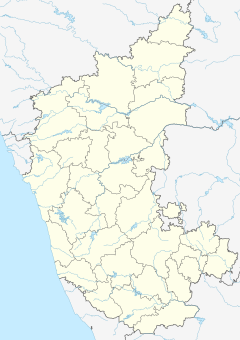| Halasuru Shri Someshwaraswami Temple | |
|---|---|
 The entrance of Someshwara temple | |
| Religion | |
| Affiliation | Hinduism |
| District | Bangalore |
| Deity | Someshwara |
| Location | |
| Location | Halasuru |
| State | Karnataka |
| Country | India |
| Geographic coordinates | 12°58′32″N 77°37′27″E / 12.975445°N 77.624231°E |
Halasuru Someshwara Temple is located in the neighborhood of Halasuru in Bangalore, Karnataka, India. It is one of the old temples in the city dating back to the Chola period, it is dedicated to the Hindu god Shiva.[1] Major additions or modifications were made during the late Vijayanagara Empire period under the rule of Hiriya Kempe Gowda II.[2][3]
Someshwara temples were built by the Chalukyas of Kalyani in Karnataka. During that period, we see Tamil inscriptions as a few Mudaliars (Tuluva Vellala) were settled. These Mudaliars, originally Tulu speaking, had settled in parts of TN especially Arcot. The temple is being managed by the Muzarai department.
The archakas are from the Dikshit community. It is one of the oldest and biggest temples of Bengaluru. The main festivals are Mahashivaratri, Brahmotsavam, and Karthika Somawaram. Other festivals include Annabhishekam, Shiva Deepam, Ardra Darshanam, Sankranthi, Yugadi, and Navarathri. Anna prasadam is provided every Monday. During shivaratri more than a lakh people visit.The vahanas ("vehicles") at the temple include the bull, adhikaranandi, elephant, mouse, peacock, goat and snake, while a silver chariot is a recent addition. Statues of the presiding divine couple are seated on a vahana or chariot which is brought in a procession around the temple while the temple band plays music
- ^ Dynamics of Language Maintenance Among Linguistic Minorities: A Sociolinguistic Study of the Tamil Communities in Bangalore. Central Institute of Indian Languages, 1986. 1986. p. 7.
- ^ Cite error: The named reference
achari1was invoked but never defined (see the help page). - ^ Michell (1995), p. 69
